Photo via the HBHRCD.
###
A week ago we wrote about severe beach erosion along the North Coast caused by the uncommonly long, El Niño-juiced winter weather pattern from which we just emerged.
Recent beachgoers near Samoa encountered more evidence of this phenomenon: two big industrial pipelines that are usually buried underground have been exposed, their girth emerging from the sand dunes to drape across the beach slope like massive, mechanized worms trying to escape into the sea.
A currently unused outfall pipe on the peninsula. | Photo by Matthew O’Brien.
###
The northernmost pipeline is owned and operated by the Humboldt Bay Harbor, Recreation and Conservation District. Its landward segment is constructed of 36-inch diameter high-density polyethylene (HDPE), with a portion still encased in the original 48-inch redwood stave pipe. The part below the low tide line, which extends about a mile and a half out to sea, is concrete-encased steel.
This pipe was installed in the mid-1960s to discharge up to 40 million gallons per day of untreated pulp mill wastewater, which got dumped into the near-shore surf zone, causing health problems among local surfers. In the 1990s, following a legal settlement with the nonprofit Surfrider Foundation and the U.S. Environmental Protection Agency, the outfall line was rebuilt and extended.
Eventually, Nordic Aquafarms intends to use this outfall pipe to discharge more than 10 million gallons per day of treated wastewater in operating its land-based aquaculture facility, producing yellowtail kingfish. (The Coastal Commission approved a discharge permit in November.)
But for the time being, it’s just being used to discharge relatively small volumes of treated wastewater effluent from the town of Samoa, plus a bit of stormwater runoff from the Harbor District’s Redwood Marine Terminal II property, on the other side of New Navy Base Road.
Since the pipe is mostly empty these days, it’s not uncommon for the top to get exposed along the beach, typically in wintertime when winds from the northwest combine with large tidal swells to erode coastal sand. But this year the erosion was particularly extreme, and by late March more than 200 feet of pipe was completely exposed.
Pounded by waves, sections of the exterior redwood casing have broken off and been carried away [or, as one reader suggested, possible stolen], allowing the flexible HDPE pipe to “float” up out of the sand. Below are a couple of labeled photos from the Harbor District showing how the pipe looked on March 14.
The Harbor District blocked off the public parking area with boulders.
###
Reached by phone this morning, Harbor District Executive Director Chris Mikkelsen said staff was amazed by the effects of winter storms on the Samoa Beach.
“The amount of [pipe] exposure was unbelievable,” he said.
Staff immediately called in the engineering firm of SHN and applied for an emergency coastal development permit. At tonight’s meeting of the Harbor District’s Board of Commissioners, staff plans to offer a status update on the emergency repair work that has already begun and possible options for a more permanent fix.
The engineers at SHN have offered the following warning:
If the pipe is not secured, it will continue to move about as the waves and tides act on it, potentially damaging the HDPE pipe or causing a failure of the pipe. Vehicles also travel along this segment of beach periodically and could crash into the pipe and damage or destroy it if it is not buried and covered with protective material.
The pipe is a critical piece of infrastructure conveying treated wastewater effluent to an approved location offshore. If the pipe were to fail or require more significant repairs, service to the Town of Samoa WWTF could be interrupted, resulting in significant hardship for the community and potential negative environmental impacts.
In order to secure the pipeline and armor it against the elements, the District enlisted SHN to conduct emergency storm damage repairs. Over the past couple of days, work crews with tractors have dug a three- to five-foot-deep trench in the beach sand alongside and slightly beneath the pipe. Once reburied, large bags of rock were placed atop the pipe to keep it from floating out of the sand again.
When we say “large bags of rock,” we’re talking about roughly four tons per bag, with bags placed along both sides of the pipe and on top of it for the entire length of its exposure.
Excavators dug a new trench for the outfall pipe. | Image via HBHRCD.
Rock bags stacked atop the re-buried pipe. | Image via HBHRCD.
Placing massive rock bags atop the pipeline in the surf zone. | Photo via HBHRCD.
###
This emergency repair work is expected to take up to two weeks to complete. As for a longer-term fix, Mikkelsen said the Army Corps of Engineers is exploring the possibility of depositing dredge spoils from Humboldt Bay onto local beaches “to achieve beach nourishment and, over time, rebuild the beaches.”
In response to the winter storms, the county declared a state of emergency in January, and Mikkelsen said the Harbor District may seek FEMA assistance to offset the emergency repair work.
In the meantime, Mother Nature will do some repair work of her own. Troy Nicolini, meteorologist-in-charge at the Eureka office of the National Weather Service, said the weather has already changed in a way that will benefit local shorelines, with winds and surf patterns depositing sand back on the wave slope.
“I know it seems like the end of the world,” Nicolini said regarding this year’s severe erosion, “but we’re just now switching to a summertime pattern … so beaches should be rebuilt really quickly.”
Photo by Terry Cook.
Photo by Terry Cook.
The marine outfall pipe comes ashore on the beach just southwest of Samoa on the Samoa Peninsula.
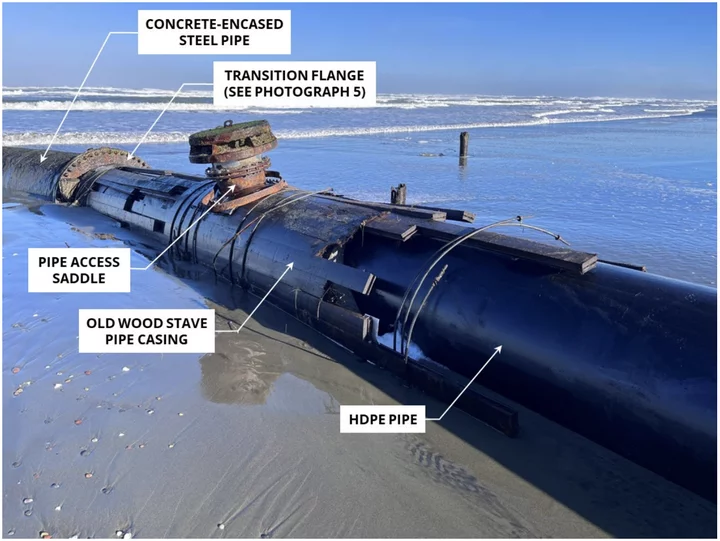
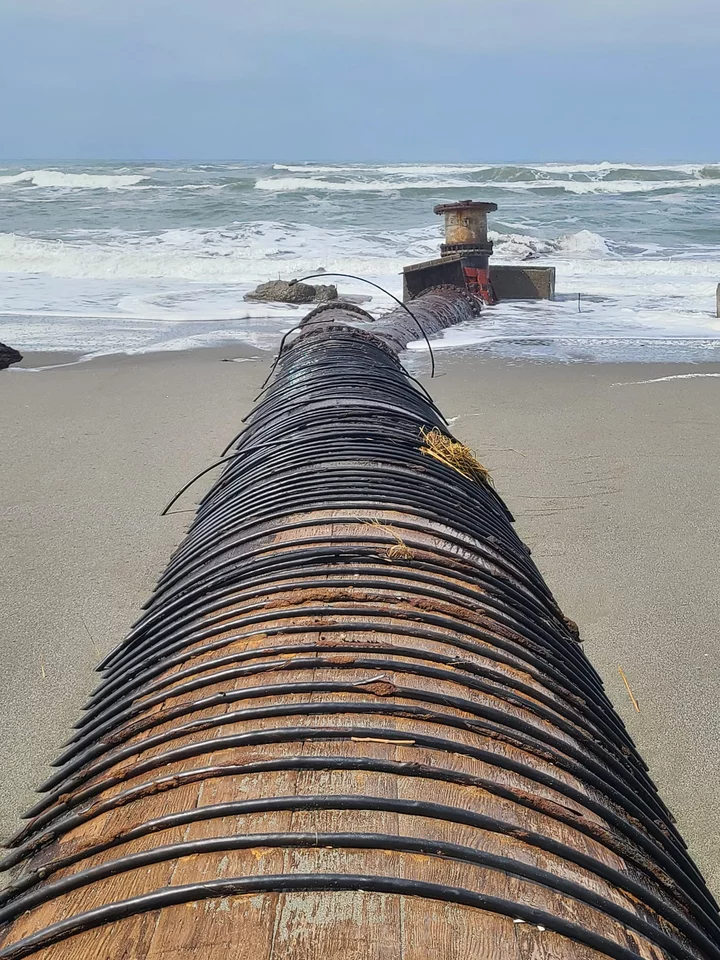

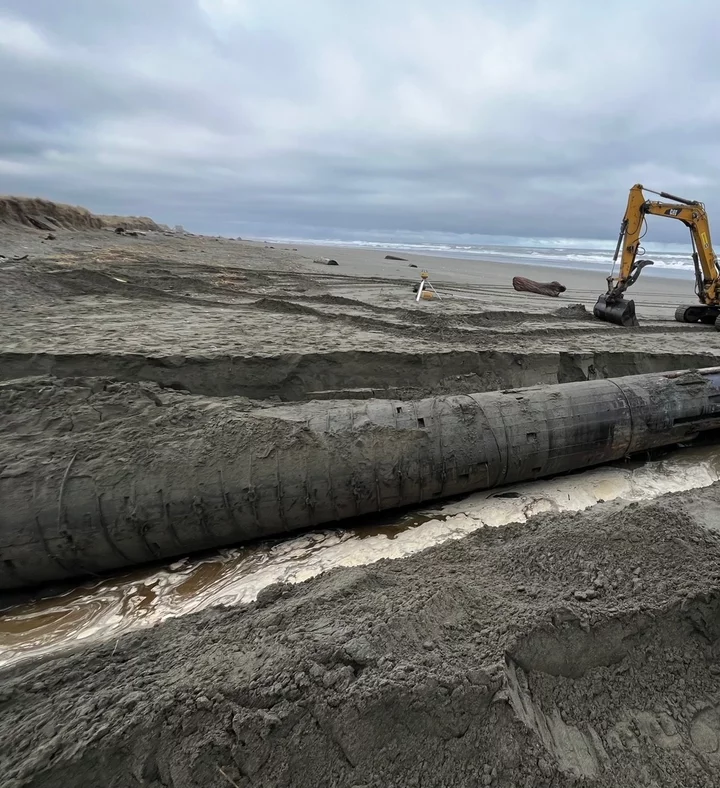
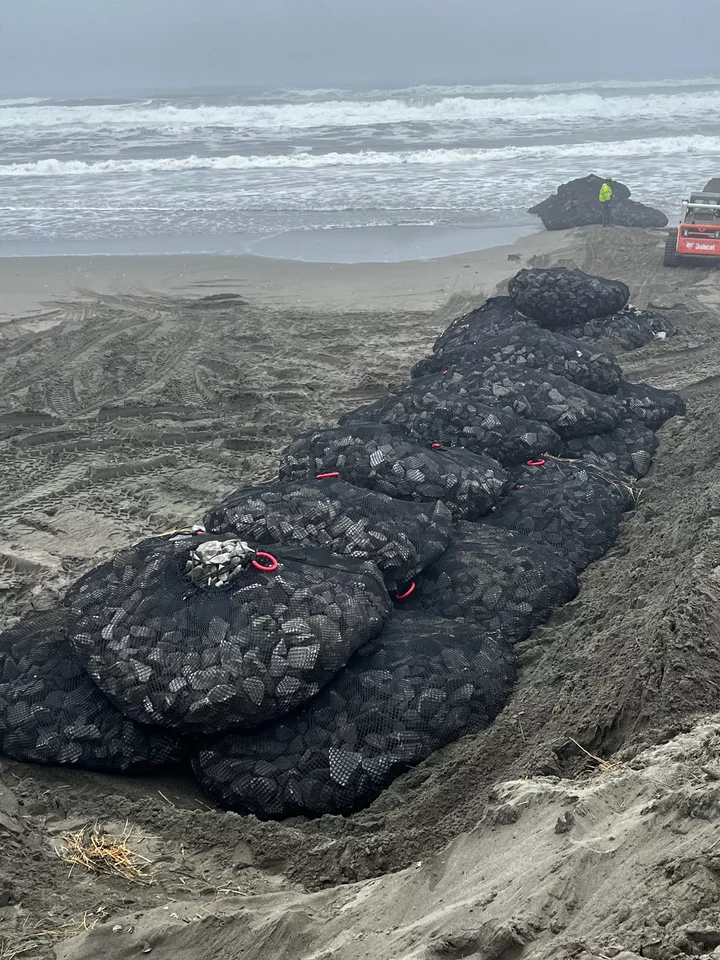
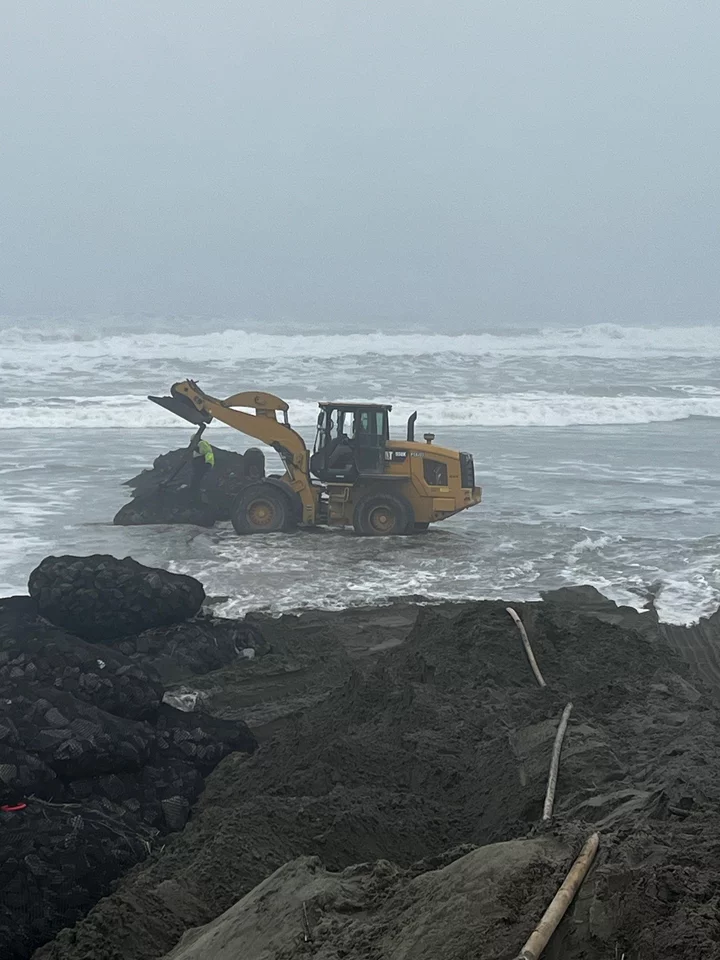

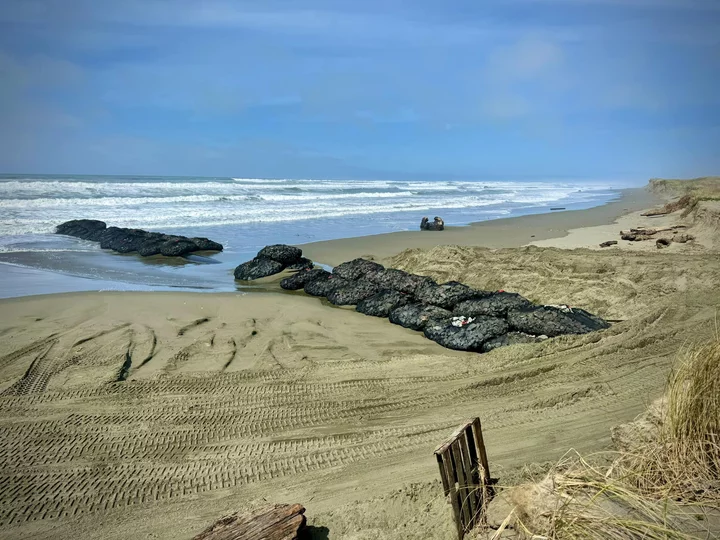
CLICK TO MANAGE